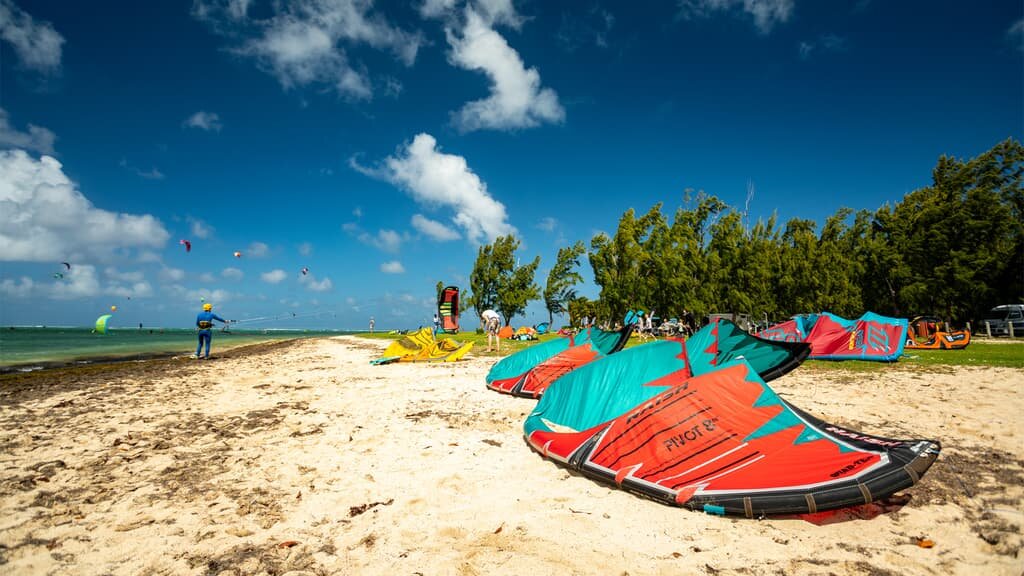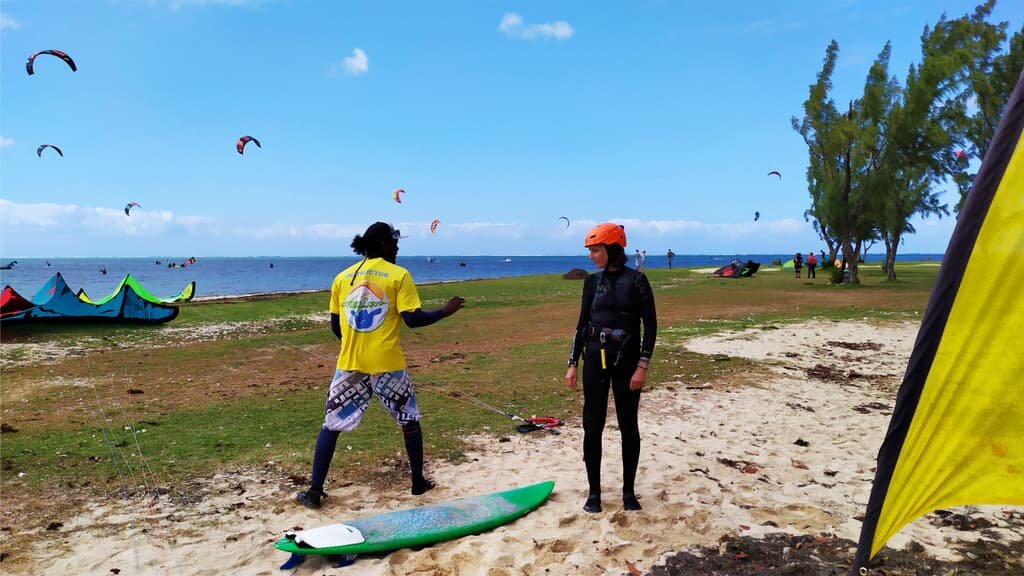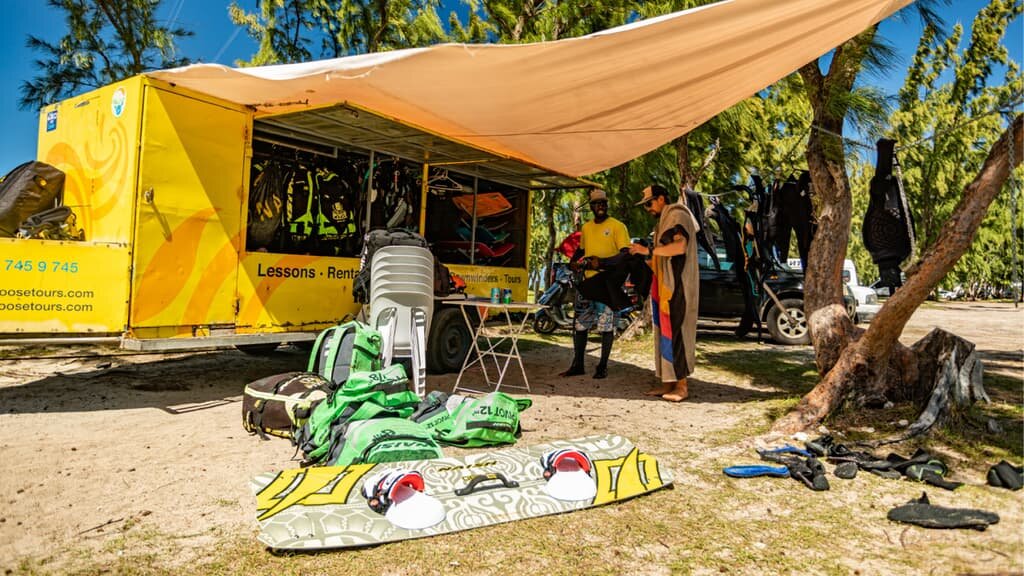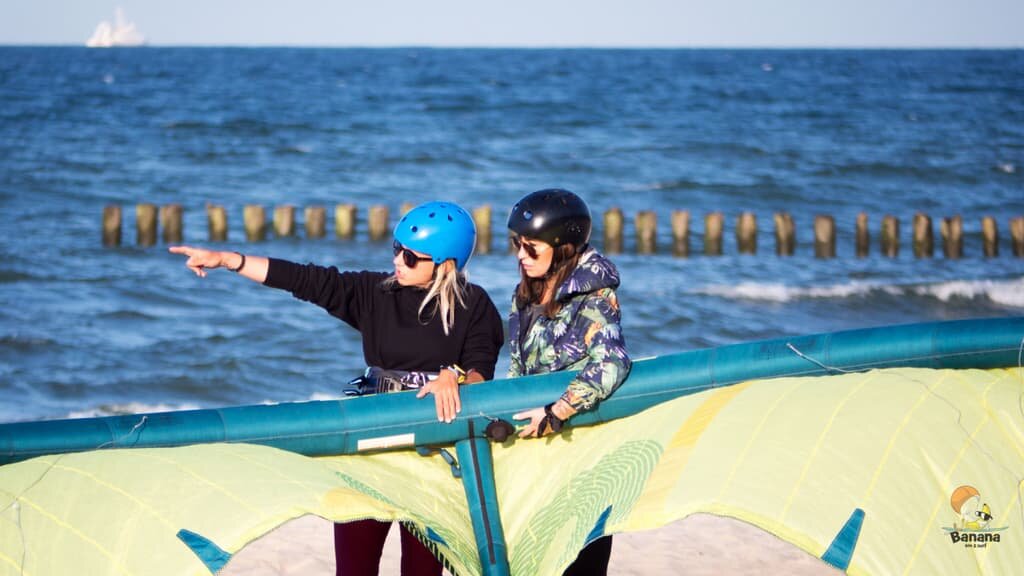Try the new IKO website at https://beta.ikointl.com/

New Kite on the Beach: 7 Tips to Ride Safely at a New Spot (And Stay on the Locals’ Good Side)
So you have completed your IKO beginner course, taken a few additional lessons, and enjoyed a series of break-through days. You have gone kiting without an instructor’s supervision for a few times, stayed upwind, nailed some of your transitions, maybe even attempted your first little jumps… You feel ready to explore a new spot. And you should do so: kiting at new spots and learning to adapt to different conditions will only make you a better kiteboarder.
Apart from unpacking a crispy new kite and bar (aaah, that “new kite gear smell” really should be bottled and sold as air freshener scent!) there are few moments as exciting as arriving at a completely new spot and seeing a bunch of kites dancing in the air. The temptation to rush to the setting-up area, pump up your kite like a runaway piston and immediately head out onto the water is big—especially if you had to origami yourself into a cramped airplane seat for hours on end in order to get there.
But not so fast!
This past summer, many of my kite family members, my husband and I made our annual trip to our favorite spot in Hawaii. Due to the gusty conditions, peculiar wind shadow and narrow beach, launching and landing there require somewhat unusual methods. As you launch, you must keep the kite low in the wind window, run down to the waterline as fast as possible, and quickly body-drag out of the wind shadow into open water and steadier winds.
A few days into our stay, a family of beginners arrived. English was not their first language, and they kept to themselves. They set their kites without talking to the friendly locals on the beach. They did not seem to understand the wind pattern, or how to position themselves correctly according to the wind direction. As a result, they could not launch the kite properly. Once they steered it up to 12 o’clock, it dropped out of the sky between two gusts.
A local fluent in their native tongue explained the beach’s conditions, but they disregarded that information and stubbornly continued to do things their way. Next, they steered their kite into a tree. By now, several locals surrounded them, wanting to prevent any further mishaps. Although the beginners had not asked for it, they received a lesson in the spot’s manners and customs of launching.
If you are the new kite on the beach, what can you do to ensure that you keep everyone safe, have a great time, and stay on the locals’ good side? Here are seven tips…

Photo: Hang Loose Tours (Mauritius)
Before You Go…
1. Do Your Homework
Research the spot. Talk to kitebuddies who have visited. Look up GoogleMaps, read wind reports, and find out what other kiteboarders have posted online. Visit the IKO Travel Pages!
2. Contact the Local IKO Center
Use the IKO website to find local schools. Many of the IKO Centers’ websites include descriptions, wind reports, photos and videos. Call or email the local IKO Center ahead of your trip. Even if you already are an independent rider at your home spot, consider scheduling a supervised riding session for your first day.
3. Contact the Local Kiteboarders
Not all spots have an IKO Center. However, there often exist social media groups run by locals, which you can contact ahead of time. You can also post on the IKO Facebook group. Maybe you already know someone who is part of the group and can introduce you to the local crowd. If not, introduce yourself and ask for help while offering something in exchange (an invitation to a meal, bringing gear if someone needs an item and there are no nearby shops, a counter-invitation to your home spot, and so on). Most of the time, kiteboarders are a friendly bunch and, if you treat them well, they will be happy to meet up at the spot for a session together.

Photo: Hang Loose Tours (Mauritius)
After You Arrive…
4. Read the Signs
Spots regulated by state parks, tourism boards or other governmental bodies often feature signs with rules and regulations about fees you have to pay, parking, permitted launching areas, and/or hours when kiteboarding is allowed. It goes without saying that you must follow the posted rules.
5. Do a S.E.A. Assessment
As a kiteboarder who has learned from a qualified instructor, you already know how to do a thorough S.E.A. (Spot, Environment, Activity) Assessment before unpacking your gear (check our free video about spot selection!). This will allow you to choose the safest launching area and rig the kite accordingly. The assessment will also make you aware of any obstacles and potential dangers.
A S.E.A. Assessment is a great start, but sometimes may not be enough. Ask the locals or IKO Center’s staff to point out any hazards not immediately visible, such as reefs, submerged rocks or tree trunks, tides, currents, unexpected wind patterns, stingrays and other wildlife, occasional shipping traffic, and so on.
Note: If during your session all the local riders suddenly head back to shore, follow them. They know about imminent drops in wind, winds suddenly turning off-shore, or other changes in conditions.
6. Don’t Be a Stranger
While safety always constitutes a priority, kiteboarding etiquette is no less important—beyond the basic rules to always return the pump you borrowed! Say hello and introduce yourself to the IKO Center’s staff and the locals. At the spot, you will usually find a friendly local who chats with everybody, or helps everyone else launch and land. Look for such a helpful and chatty kiteboarder, since they will be the one person most willing to talk to you. Every kiteboarding community has its own customs, so you should ask:
- In which direction do I set my lines so that everyone has enough space?
- In which direction does everyone launch and land?
- How should I stow my gear during a break?
- Is it OK to pump more than one kite, or would my extra gear over-crowd the beach?
Be aware that, especially on a narrow beach, a spot can go from pleasantly empty to extremely crowded with the addition of just a few more riders. I have to admit that, at another Hawaiian spot, the locals once told us off when we lazily left our kites sitting on the sand next to each other, without stacking them: “You must be from California, where you have huge beaches and can leave your gear lying around! Here we have to save space!” Needless to say, we apologized and immediately pushed our kites together.
It is always a nice gesture to bring beverages or treats as “thank you” for the locals’ advice. When I lived in Turkey, I routinely brought plenty of dried fruit and nuts to the kite spots, to share with kitebuddies old and new.

Photo: Banana Kite n Surf (Poland)
7. Most Importantly: Be Humble!
This may be hard to admit: Even if you are an independent or even advanced rider at your home spot, you lack experience with the new spot’s conditions. For example, you may ride your twintip very well on the flat waters of a lake or lagoon, but ocean waves or choppy rivers require different riding skills. Even if you have great kite control in steady light winds, gusty strong winds may be beyond your kite-flying abilities. Until you gain experience, you may not even be able to safely launch your kite or stay upwind.
Be humble enough to accept the fact that you need help and advice.
Be humble enough to listen respectfully to the IKO Center’s staff and/or locals and follow their directions.
And Lastly...
Keep in mind that in some locations kiteboarders are the latest arrivals among the beach, lake- or river-shore users; some local governing bodies may be unsure about permitting kiteboarding there at all. Any incidents can harm the reputation of the local kiteboarding community AND the sport in general.
We all want to keep our spots safe and open to new riders with the appropriate skill level. Most of us kiteboarders will gladly take the time to talk to the new kite(r) on the beach. In exchange, respect our advice and be willing to help us when we show up at your spot.
Happy kiting—and keep exploring!
PS. A shout-out to the riders and instructors of the IKO Facebook group for their input!
Author: Nina Macaraig
Banner photo: Hang Loose Tours (Mauritius)
.png)

